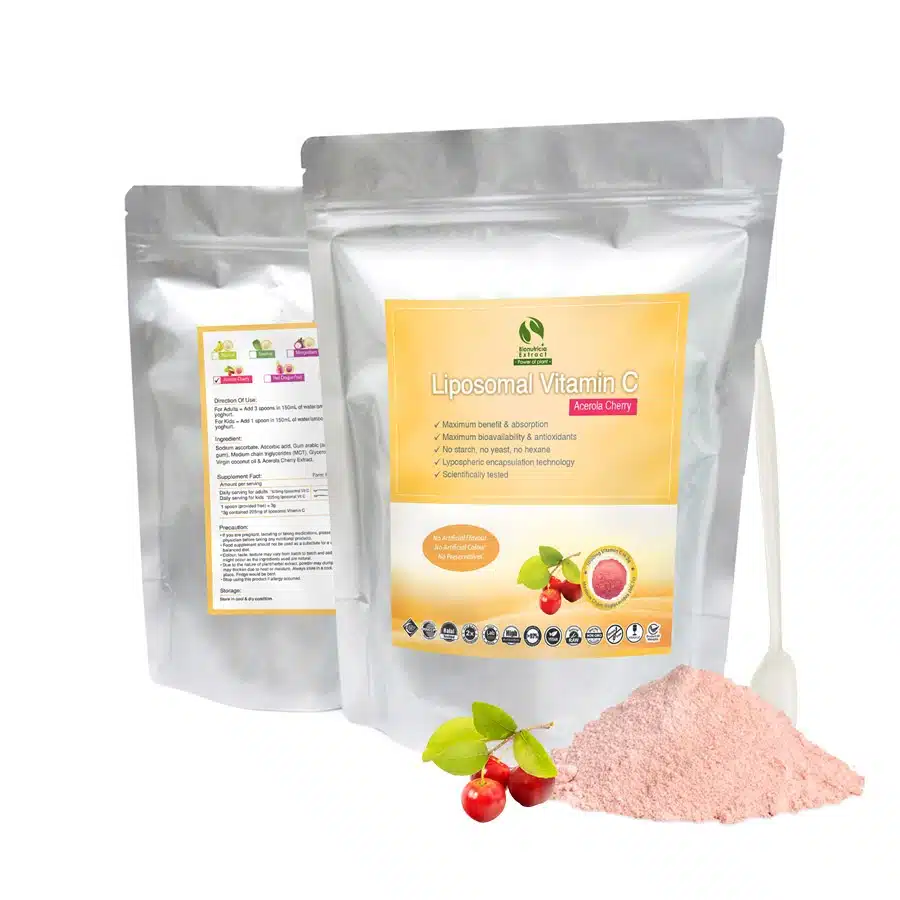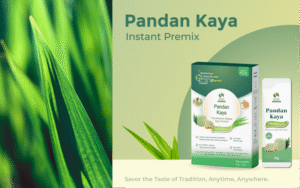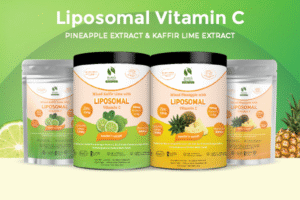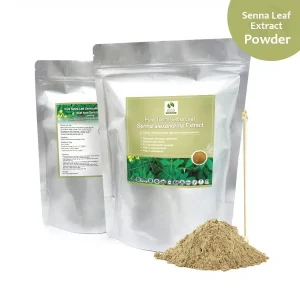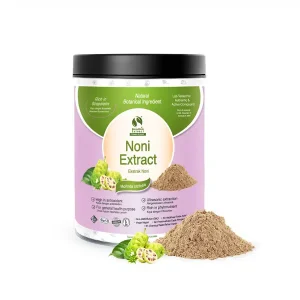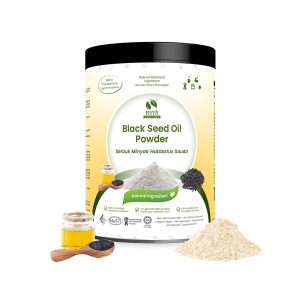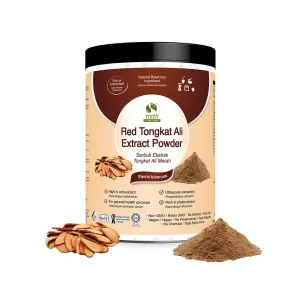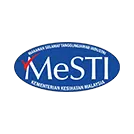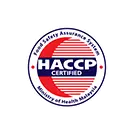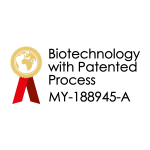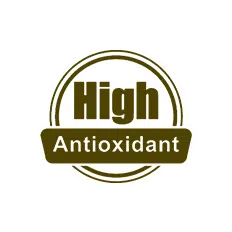Malpighia emarginata, M. glabra
Family: Malpighiaceae
INTRODUCTION
Acerola is the common name assigned to two species in the tropical nance family (Malpighiaceae) — Malpighia emarginata and M. glabra. Both are called Barbados cherry and West Indian cherry by various sources that are not always in agreement as to which is which.1,2 Some sources even classify them as the same species.3 Malpighia glabra is a large shrub or small tree that can grow as tall as 20 feet (6.09 m).4 The pink or lavender flowers are succeeded by red drupes, i.e., stone fruits (fleshy fruits with one seed that do not split open upon maturation) sometimes referred to as acerola cherries. This species is native to the Lesser Antilles from St. Croix Island (US Insular Area) to Trinidad and Tobago, Curaçao (Netherlands), and Margarita Island (Venezuela), as well as neighboring northern South America into Brazil. Malpighia glabra was introduced to cultivation in Cuba, Jamaica, and Puerto Rico (US Insular Area).4
Malpighia emarginata also is a shrub or small tree that grows up to 20 feet tall.5 The flowers and fruit are very similar to M. glabra. Malpighia emarginata is indigenous to southern Mexico, Central America, and the northern region of South America. It was introduced to Brazil, now the world’s biggest producer, in the mid-20th century.5
The fruit of both species is used interchangeably and is round, bright red, one-half to one inch (1.25-2.5 cm) in diameter, with juicy, acidic pulp.4
HISTORY AND CULTURAL SIGNIFICANCE
Acerola fruit is high in vitamin C in the form of ascorbic acid.4 The fruit’s ascorbic acid content is dependent upon various factors including how and where the plant is grown, how much sunlight it receives, and at what stage of ripeness the fruit is harvested, as well as the individual plant’s genetic makeup. The amount of ascorbic acid can range from up to 4,500 mg per 100 g of edible fruit if harvested when still green, or 2,000 mg ascorbic acid per 100 g of edible fruit if harvested when very ripe. Acerola is surpassed in vitamin C content by very few sources, chief among them kakadu plum (Terminalia latipes ssp. psilocarpa, syn. Terminalia ferdinandiana, Combretaceae), camu-camu (Myrciaria dubia, Myrtaceae), and rose hips (Rosa spp., Rosaceae).6 As with many plants, some of the beneficial effects are diminished by heat. For example, jelly made from acerola may contain only 500 to 1,900 mg ascorbic acid per 100 g of fruit.4
Malpighia glabra juice is popular in Brazil, and the fruit is consumed as a natural remedy.7 The fruit has astringent,7,8 anti-inflammatory, stimulant, and diuretic properties.7 In Brazil, the fresh fruit is used for cardiovascular support, diarrhea (Brazil, Guatemala), dysentery (Brazil, Venezuela), fever (Brazil, Mexico), wound healing (Brazil), and as nutritional support for convalescents and those who require treatment for anemia, high cholesterol, diabetes, liver conditions, rheumatism, and tuberculosis.7 It also has been used to treat hepatitis, breast conditions (Venezuela),7 and tenesmus (a symptom characterized by a sensation of constantly needing to pass stools although the colon is empty).8
In the United States, acerola is used as a food (e.g., juice) or as a component of dietary supplement products.9 For example, extracts of the whole fruit are found in vitamin C supplements, sometimes in combination with other sources of vitamin C such as ascorbic acid and/or sodium ascorbate.
The ripe fruit, which is pleasant to taste despite being slightly sour, is used in making jams, jellies, juice, ice cream, pies, and preserves, as well as flavoring for cocktails.10 It also is used in making liqueurs.8
CURRENT AUTHORIZED USES IN COSMETICS, FOODS, AND MEDICINES
For beverage food products, the United States Food and Drug Administration requires a minimum Brix Level* of 6.0 for acerola single-strength (100% juice) products.9 In its International Food Standards, Codex Alimentarius set a minimum Brix Level of 6.5 for reconstituted acerola fruit juices and reconstituted acerola purée, and a minimum juice and/or purée content (% v/v) of 25.0% for acerola fruit nectars.11
For conventional (non-organic) cultivation of acerola, the US Environmental Protection Agency has established maximum allowable limits for residues of various acaricides (e.g., bifenazate), fungicides (e.g., azoxystrobin, fludioxonil), herbicides (e.g., carfentrazone-ethyl, glyphosate, paraquat), insecticides (e.g., buprofezin, chlorantraniliprole, fenpropathrin, imidacloprid, methoxyfenozide, spinetoram, spinosad, spirotetramat), and pesticides (e.g., pyriproxyfen).12 There are, however, more than 20 producers of certified organic acerola fruit listed in the United States Department of Agriculture National Organic Program (NOP) database of operators, most of which are situated in Brazil, but also in Costa Rica and Peru.
In Canada, acerola is classified as a medicinal ingredient and is listed as a complementary ingredient in the “Workout Supplements” monograph at a maximum daily dose of 48 g of fruit.13 At non-therapeutic dosages, other defined acerola substances are permitted for use as non-medicinal ingredients of licensed natural health products (NHPs).14 For example, acerola fruit juice, fruit juice concentrate, and/or fruit extract can be used as non-medicinal flavor-enhancing ingredients. Dried acerola fruit also may be used as a flavor enhancer or preservative antioxidant, except in vitamin C products. In such cases, acerola must be declared as a source of the medicinal ingredient vitamin C for oral vitamin C products, or for products making claims per the NHP Directorate vitamin C monograph, if the quantity of vitamin C provided is above the lower medicinal limit as stated in the monograph. At the time of this writing (August 2014), there were more than 250 licensed NHPs listing either “acerola” or “Malpighia glabra” as a medicinal ingredient and more than 120 licensed NHPs listing acerola as a non-medicinal ingredient.15
In the European Union (EU), acerola fruit has been on the market as a food or food ingredient and was consumed to a significant degree prior to May 15, 1997; therefore, its presence in the EU market is not subject to the Novel Food Regulation No. 258/97.16 The European Food Safety Authority issued a scientific opinion on substantiation for health claims related to vitamin C, including those made for acerola fruit products.17 Proposed wording of acceptable claims for products containing acerola fruit at a daily amount equivalent to 12 mg vitamin C include the following: “Vitamin C can contribute to the reduction of tiredness and fatigue,” “Vitamin C contributes to normal psychological functions,” “Vitamin C contributes to the regeneration of the reduced form of vitamin E,” “Vitamin C contributes to normal energy-yielding metabolism,” “Vitamin C contributes to a normal function of the immune system,” and “Vitamin C contributes to the protection of cell constituents from oxidative damage.”
Several acerola ingredients are listed for use in cosmetic products by the European Commission Health and Consumers Directorate General.18 For example, “Malpighia Glabra Fruit,” “Malpighia Glabra Fruit Extract,” “Malpighia Glabra Fruit Juice” (juice expressed from the fruit), “Malpighia Glabra Fruit Water” (aqueous solution of the steam distillates obtained from the fruit), and “Hydrolyzed Acerola Fruit” (hydrolysate of the fruit derived by acid, enzyme, or other method of hydrolysis) all are listed as skin-conditioning substances; “Malpighia Emarginata Fruit Extract” and “Malpighia Emarginata Seed Extract” both are listed for hair- and skin-conditioning functions; and “Malpighia Emarginata Fruit Powder” is listed as an absorbent (takes up water- and/or oil-soluble dissolved or finely dispersed substances).
MODERN RESEARCH
In laboratory experiments, acerola has exhibited the following actions: acetylcholinesterase inhibition,19 antigenotoxic,20,21 antioxidant,20-23 anti-inflammatory,22 free radical scavenging,24 inhibition of the formation of both alpha-glucosidase and advanced glycation end product,24 cytotoxic against tumor cell lines (human oral squamous cell carcinoma and human submandibular gland carcinoma),25 antibacterial,25 nitric oxide production inhibition,26 and antifungal.27
Unfortunately, relatively few human clinical studies have investigated acerola’s medicinal benefits as it is consumed mainly as a food.
A clinical study published in 2011 explored the efficacy of a combination product in the treatment of recurrent upper respiratory tract infections in children.28 The product, Imoviral® Junior (100 mg 4% echinacoside from Echinacea angustifolia [Asteraceae], arabinogalactan [amount not stated], 265 mg acerola, 50 mg beta-glucan, 7 mg zinc [extraction method not stated]; Cristalfarma; Milan, Italy), was given to 37 children with recurrent pharyngotonsillitis (inflammation of the pharynx and tonsils, characterized by sore throat) or otitis media (middle ear infection) at the dosage of one sachet per day (dissolved in water) for two weeks per month for three months. The cycle was repeated once and a follow-up was conducted at six months. The mean number of inflammatory episodes decreased from 3±2.19 during the six months prior to treatment to 1±0.93 during the six months following treatment. At the completion of the treatment, 77% of the children reported decreased frequency of chronic inflammation. Overall, parents expressed general satisfaction and a better quality of life for the children treated.
A 2012 single-stage, phase IV, prospective, non-comparative, open clinical study investigated a combination product intended to counteract the effects of skin aging.29 Fifty women, 35 to 60 years of age, with skin phototypes I (pale, with light eyes and hair, who frequently burn and rarely tan) to III (darker white skin, who tan after initial burn) took two tablets per day with food for 120 days of Imedeen® (Biomarine Complex™, an extract of marine proteins and polysaccharides, and 14.8 mg LycoPhence GS®, composed of lycopene, grape seed extract, and 30 mg acerola extract; Ferrosan A/S; Copenhagen, Denmark). Concurrently, the subjects used Episol® SPF 15 lotion (Mantecorp Indústria Quimíca e Farmacêutica Ltda.; Rio de Janeiro, Brazil) on the face, twice daily, in the morning and at lunch. Results obtained from analysis of clinical response assessment questionnaires showed that gradual and statistically significant clinical improvement in wrinkles, fine lines, redness, hydration, sebum, and smoothness was experienced with daily use.
In 2011, a crossover, experimental study in Japan investigated the bioavailability of ascorbic acid in humans.30 Healthy male volunteers (number not stated, aged 22 to 26 years, non-smokers not taking high-dose vitamin C supplements) took a single oral dose of ascorbic acid (50, 100, 200, or 500 mg with 100 ml distilled water). Blood was collected and centrifuged every half hour for three-and-a-half hours and at hours four, five, and six after the dose. Additionally, urine samples were collected and their volume recorded every one to two hours up to six hours after the dose. After an overnight fast, the same procedure was followed but with the subjects drinking 100 ml acerola juice (frozen mature fruit obtained from Nichirei do Brazil; Recife, Brazil) diluted with water containing 50 mg ascorbic acid. Results showed that acerola juice promoted the absorption of ascorbic acid in blood plasma and suppressed its excretion in urine better than ascorbic acid alone.
FUTURE OUTLOOK
The main production areas and trading centers for acerola fruit ingredients are in South American countries, particularly Brazil.31 Early 2014 market reports indicated flat demand for most fruit juices including acerola, which may be linked to negative publicity surrounding fruit juice consumption (due to their naturally occurring sugar levels). Prices for acerola fruit juice ingredients also have declined because the market is well supplied. Indicative prices from April through July 2014 were $1,150 to $1,200 per metric ton (CFR Rotterdam) for frozen single strength from Brazil and $3,000 to $3,100 per metric ton (FOB Santos) for origin frozen concentrate (20-22 brix clear) from Brazil.
One of the NOP certified organic producers of acerola is “Fazenda Amway Nutrilite Do Brasil Ltda – Nutribotânica” (Ubajara, Brazil), also affiliated with Trout Lake Farm LLC (Trout Lake, Washington).32 Fazenda Nutribotânica is the largest Nutrilite® farm, producing acerola fruit year-round on 1,660 hectares, and providing 100% of the natural ascorbic acid used in Nutrilite products. Since 1999, the Fazenda Nutribotânica farm has been inspected and certified by Instituto Biodinâmico.33 In addition to operating under organic agriculture standards, the farm has implemented biodynamic standards and has Demeter biodynamic certification. Fazenda Nutribotânica claims to be the world’s largest grower of certified organic and biodynamic acerola fruit.
In collaboration with Nutrilite, the Brazilian Agricultural Research Corporation — or EMBRAPA (Empresa Brasileira de Pesquisa Agropecuária) — developed a new acerola variety known as “BRS 366 Jaburu,” which yields 100 kg of fruit per plant annually, corresponding to about 57 metric tons per hectare.34 EMBRAPA states that this is an approximately 20% higher yield than the second most productive variety known as Mineria. The fruits are picked green, when the vitamin C levels are twice that of the ripe fruit. According to EMBRAPA, the new cultivar has a competitive advantage over others because it is well suited to both manual and mechanized harvesting.34 Other sources report that the average yields for acerola in the Brazilian northeast are 40 or more tons per hectare compared to 25 tons in other regions.35
The total area of acerola cultivation in Brazil is estimated to be more than 10,000 hectares, with the highest production occurring in the northeastern state of Bahia, followed by the nearby northeastern states of Pernambuco, Ceará, and Paraíba.36 Annual fruit production in Brazil is approximately 33,000 metric tons. About 37% to 43% of the annual crop is exported, with primary destination markets comprising the United States, Germany, France, and Japan.
According to natural products industry insiders, a significant amount of the global supply of acerola material is reportedly adulterated with exogenous L-ascorbic acid, some of which may be chemically synthesized and/or produced from genetically engineered starting materials. For many years, L-ascorbic acid had been produced mainly by chemical synthesis (Reichstein process), but there are new biotechnological approaches, e.g., involving the epiphytic bacterium Erwinia herbicola (Enterobacteriaceae) strain genetically engineered to contain a gene from the Gram-positive bacterium Corynebacterium spp. (Corynebacteriaceae), which converts glucose to 2-ketogulonic acid and can then be converted to ascorbic acid, among other novel biotech methods.37 Methodologies to determine the presence or absence of biotech or synthetic L-ascorbic acid in acerola products have been developed and validated, including Isotope Ratio Mass Spectrometry (13C-IRMS-AOAC 998.12).38 It is recommended that buyers of natural acerola ingredients and products work with independent laboratories applying this methodology in order to verify authenticity.
Although the so-called “super fruit” market is somewhat crowded, and acerola berries compete in this arena against other more popular Brazilian exports such as açaí (Euterpe oleracea, Arecaceae) berries, the market for all things organic and biodynamic continues to grow. With an increasing number of certified organic acerola operations, this is an area that may grow faster than conventional acerola product demand. There is also a growing niche for non-synthetic, food-based vitamin products for which acerola powders and extracts can play a role as a source of natural, plant-based vitamin C.
—Gayle Engels and Josef Brinckmann
REFERENCES
- McGuffin M, Kartesz JT, Leung AY, Tucker AO. American Herbal Products Association’s Herbs of Commerce, 2nd ed. Silver Springs, MD: American Herbal Products Association; 2000.
- Taxon: Malpighia. USDA Germplasm Resources Information Network (GRIN). Available at: www.ars-grin.gov/cgi-bin/npgs/html/tax_search.pl?language=en. Accessed August 25, 2014.
- Malpighia emarginata. National Tropical Botanical Garden database. Available at: www.ntbg.org/plants/plant_details.php?plantid=7316. Accessed August 25, 2014.
- Morton J. Barbados Cherry. In: Fruits of Warm Climates. Miami: Julia F. Morton. 1987;204-207. Available at: www.hort.purdue.edu/newcrop/morton/barbados_cherry.html. Accessed August 19, 2014.
- Mondin M, Oliveira CA, Vieira MLC. Karyotype characterization of Malpighia emarginata (Malpighiaceae). Rev Bras Frutic. 2010;(32)2:369-374.
- Sources of Vitamin C. News Medical website. Available at: www.news-medical.net/health/Sources-of-Vitamin-C.aspx. Accessed August 19, 2014.
- Taylor L. The Healing Power of Rainforest Herbs: A Guide to Understanding and Using Herbal Medicinals. Garden City Park, NY: Square One Publishers; 2005.
- Duke JA. Malpighia glabra. Dr. Duke’s Phytochemical and Ethnobotanical Databases. Available at: . Accessed August 19, 2014.
- Food and Drug Administration (FDA). 21 CFR §101.30—Percentage juice declaration for foods purporting to be beverages that contain fruit or vegetable juice. In: Code of Federal Regulations. Washington, DC: US Government Printing Office; 2014. Available at: . Accessed August 19, 2014.
- Madison D. Edible: An Illustrated Guide to the World’s Food Plants. Washington, DC: National Geographic Society; 2008.
- Food and Agriculture Organization of the United Nations (FAO). Codex General Standard for Fruit Juices and Nectars (CODEX STAN 247-2005). Rome: FAO; 2005.
- Environmental Protection Agency (EPA). 40 CFR Subchapter E—Pesticide Programs (Parts 150-180). In: Code of Federal Regulations. Washington, DC: US Government Printing Office; 2013. Available at: www.gpo.gov/fdsys/pkg/CFR-2013-title40-vol25/pdf/CFR-2013-title40-vol25-chapI-subchapE.pdf. Accessed August 19, 2014.
- Natural Health Products Directorate (NHPD). Monograph: Natural Health Product Workout Supplements. Ottawa, ON: Health Canada. Available at: http://webprod.hc-sc.gc.ca/nhpid-bdipsn/ingredsReq.do?srchRchTxt=acerola&srchRchRole=-1&mthd=Search& /a>. Accessed August 19, 2014.
- Natural Health Products Directorate (NHPD). Licensed Natural Health Products Database (LNHPD). Ottawa, ON: Health Canada. Available at: http://webprod5.hc-sc.gc.ca/lnhpd-bdpsnh/index-eng.jsp. Accessed August 19, 2014.
- European Commission Directorate General Health & Consumers. Novel Food Catalogue. Brussels, Belgium: European Commission. Available at: http://ec.europa.eu/food/food/biotechnology/novelfood/novel_food_catalogue_en.htm. Accessed August 19, 2014.
- EFSA Panel on Dietetic Products, Nutrition and Allergies (NDA); Scientific opinion on the substantiation of health claims related to vitamin C and reduction of tiredness and fatigue (ID 139, 2622), contribution to normal psychological functions (ID 140), regeneration of the reduced form of vitamin E (ID 202), contribution to normal energy-yielding metabolism (ID 2334, 3196), maintenance of the normal function of the immune system (ID 4321) and protection of DNA, proteins and lipids from oxidative damage (ID 3331) pursuant to Article 13(1) of Regulation (EC) No 1924/2006. EFSA Journal. 2010;8(10):1815. Available at: www.efsa.europa.eu/en/search/doc/1815.pdf. Accessed August 19, 2014.
- European Commission Directorate General Health & Consumers. Cosmetic Ingredients and Substances (CosIng®) Database. Brussels, Belgium: European Commission. Available at: http://ec.europa.eu/consumers/cosmetics/cosing/. Accessed August 19, 2014.
- Liu JQ, Peng XR, Li XY, et al. Norfriedelins A-C with acetylcholinesterase inhibitory activity from acerola tree (Malpighia emarginata). Org Lett. 2013;15(7):1580-1583.
- Nunes Rda S, Kahl VF, Sarmento Mda S, et al. Genotoxic and antigenotoxic activity of acerola (Malpighia glabra L.) extract in relation to the geographic origin [published online November 26, 2012]. Phytother Res. 2013;27(10):1495-501. doi: 10.1002/ptr.4896.
- Nunes Rda S, Kahl VF, Sarmento Mda S, et al. Antigenotoxicity and antioxidant activity of acerola fruit (Malpighia glabra L.) at two stages of ripeness. Plant Foods Hum Nutr. June 2011;66(2):129-135.
- Dartsch PC, Kler A, Kriesl E. Antioxidative and anti-inflammatory potential of different functional drink concepts in vitro. Phytother Res. 2009;23(2):165-171.
- De Assis SSA, Vellosa JC, Brunetti IL, et al. Antioxidant activity, ascorbic acid and total phenol content of exotic fruits occurring in Brazil. Int J Food Sci Nutr. 2009;60(5):439-448.
- Hanamura T, Hagiwara T, Kawagishi H. Structural and functional characterization of polyphenols isolated from acerola (Malpighia emarginata DC.) fruit. Biosci Biotechnol Biochem. 2005;69(2):280-286.
- Motohashi N, Wakabayashi H, Kurihara T, et al. Biological activity of Barbados cherry (acerola fruits, fruit of Malpighia emarginata DC) extracts and fractions. Phytother Res. 2004;18(3):212-223.
- Wakabayashi H, Fukushima H, Yamada T, et al. Inhibition of LPS-stimulated NO production in mouse macrophage-like cells by Barbados cherry, a fruit of Malpighia emarginata DC. Anticancer Res. 2003;23(4):3237-3241.
- Cáceres A, López B, Juárez X, del Aguila J, García S. Plants used in Guatemala for the treatment of dermatophytic infections. Evaluation of antifungal activity of seven American plants. J Ethnopharmacol. 1993;40(3):207-213.
- Minetti AM, Forti S, Tassone G, Torretta S, Pignataro L. Efficacy of complex herbal compound of Echinacea angustifolia (Imoviral® Junior) in recurrent upper respiratory tract infections during pediatric age: preliminary results. Minerva Pediatr. 2011;63(3):177-182.
- Costa A, Lindmark L, Arruda LH, et al. Clinical, biometric and ultrasound assessment of the effects of daily use of a nutraceutical composed of lycopene, acerola extract, grape seed extract and Biomarine Complex in photoaged human skin. An Bras Dermatol. 2012;87(1):52-61.
- Uchida E, Kondo Y, Amano A, et al. Absorption and excretion of ascorbic acid alone and in acerola (Malpighia emarginata) juice; comparison in healthy Japanese subjects. Biol Pharm Bull. 2011;34(11):1744-1747.
- Market Insider for Fruit Juices, Pulps and Purees. International Trade Centre website. Geneva, Switzerland: ITC. Available at: www.intracen.org/itc/market-insider/fruit-juices-pulps-and-purees/. Accessed August 19, 2014.
- Amway/Nutrilite. Trout Lake Farm LLC website. Available at: www.troutlakefarm.com/our-partner-amwaynutrilite. Accessed August 19, 2014.
- The Company. Nutribotanica website. Available at: www.nutribotanica.com/en/index.php?option=com_content&view=article&id=6&Itemid=5. Accessed August 19, 2014.
- Brazil: EMBRAPA launches several new fruit varieties. FreshFruitPortal website. December 18, 2012. Available at: www.freshfruitportal.com/2012/12/19/brazil-embrapa-launches-several-new-fruit-varieties/?country=united%20states. Accessed August 19, 2014.
- Altaffer P, Washington-Smith G. From the corners of the world: kiwi, acai, acerola, oh my! analyzing the back stories of three impressive superfruits. Nutraceuticals World. May 1, 2008. Available at: www.nutraceuticalsworld.com/issues/2008-05/view_columns/from-the-corners-of-the-world-kiwi-acai-acerola-oh/. Accessed August 19, 2014.
- Alves RE, Bezerra MA, de Miranda FR, Silva H. Acerola. In: Johnston AE (ed.). IPI Bulletin No. 18: Fertilizing for High Yield and Quality Tropical Fruits of Brazil. Horgen, Switzerland: International Potash Institute; 2007. Available at: www.ipipotash.org/udocs/IPI_Bulletin_18_Tropical_Fruits.pdf. Accessed August 19, 2014.
- Demain AL. The business of biotechnology. Industrial Biotechnology. 2007;3(3):269-283.
- Albertino A, Barge A, Cravotto G, Genzini L, Gobetto R, Vincenti M. Natural origin of ascorbic acid: Validation by 13C NMR and IRMS. Food Chem. 2009;112(3):715-720.


